Southeast Asian Artists
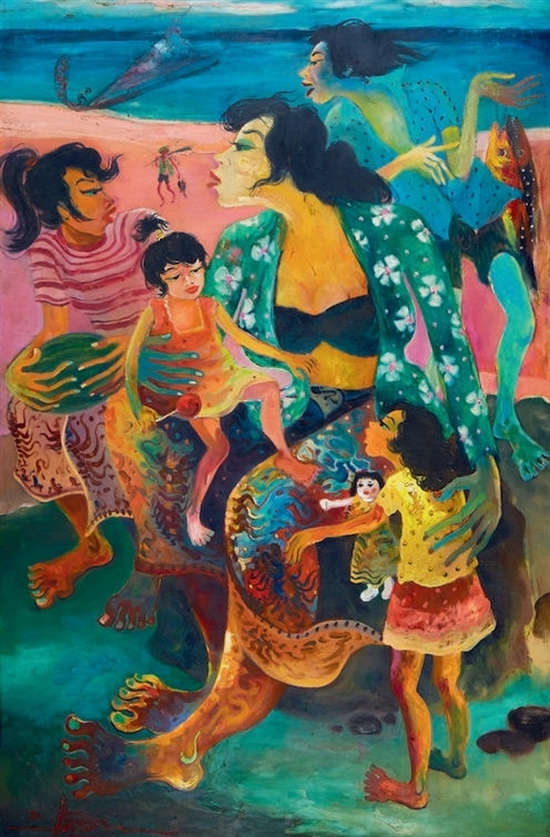
Hendra Gunawan, Ibu dan Anak Anak. (1980). Courtesy of Artnet Auctions.
Southeast Asia as a field of area study only became established in the early 1950s, in the aftermath of World War II. 1 It was part of an initiative by American universities and foundations to further understand territories that were once colonised, including countries such as Singapore, Malaysia, Indonesia, the Philippines, and Vietnam. While Southeast Asian governments primarily focused on economic development post-World War II, Southeast Asian art only became subject to academic and scholarly scrutiny in the early 1990s. 2 3
Contemporary Southeast Asian art is often viewed through the lens of colonialism and its aftermath. Art historian John Clark considers the transition to modernity in Southeast Asian art to be conceived in terms of “transfer and domination of Euramerican stylistic models”. 4 This can be first observed through Raden Saleh’s romantic, Dutch-influenced paintings of Javanese landscapes. As one of the earliest contemporary Southeast Asian artists, Saleh moved out of Java in 1829 to pursue a European art education and quickly gained recognition for his work amongst European aristocracy. During this period, Southeast Asian art was strongly linked to aristocracy-commissioned work, where artists such as Thai painter Khrua In Khong and Filipino native Simon Flores also received their start. 5
In the late 1800s and early 1900s, colonisation throughout Southeast Asia brought about the establishment of local fine art academies. In Vietnam, people were urged to accept and understand Western culture with the goal of restoring national independence, especially after many failed uprisings against the French.6 The first fine art academy, L’Ecole des Beaux-arts de L’Indochine, produced artists such as To Ngoc Van and Nguyen Tuong Lan. Similarly, the Academia de Dibujo y Pintura of the Philippines taught Spanish art pedagogy, where prominent Filipino artist Juan Luan studied in the late 1800s. 7
During this period, resistance against colonisation manifested in different forms throughout the various Southeast Asian countries. Works by Indonesian artists Soedjojono, Affandi, and Hendra Gunawan often display highly emotional, dominant themes of struggle for independence, poverty, and injustice in the first half of the 20th century. 8 Likewise, although Filipino artist Victorio C. Edades was largely American trained, the “Father of Modern Philippine Painting” often portrayed rural Filipino labourers and factory workers in his works.
By the 1960s, many Southeast Asian countries increasingly welcomed international trade and oriented themselves toward economic development. 9 Contemporary Indonesian artists such as Dede Eri Supria and Sudarisman were captivated by the influx of advertisements, graphic design, and photographs. 10 Photographic realism in painting emerged and flourished in this period, depicting themes that dealt with modern urban life.
As the contemporary art movement grew in Southeast Asia, more artists moved away from painting to explore different art mediums. In the early 1990s, Thai artists began moving towards a fully collaborative approach by displaying their work in public spaces and encouraging the audience to physically engage with their art.11 Artists such as Montien Boonma and Rirkrit Tiravanija began working with installations and performances, which art historian Sandra Cate identifies as an acknowledgment of art’s historical role as a part of everyday life in Southeast Asia. 12
Till this day, the study of contemporary Southeast Asian art remains highly debatable, with various approaches offered by different academics and experts. Nonetheless, contemporary Southeast Asian art continues to evolve and develop today, providing clues that reveal the region’s heritage, history, and development.
This guide provides a selection of resources on Southeast Asian artists and is not meant to be exhaustive. You can also visit catalogue.nlb.gov.sg to search for more materials on specific artists. This resource guide was prepared in January 2022 by Winnie Tan, Associate Librarian at the National Library.
Books
| Books | Description |
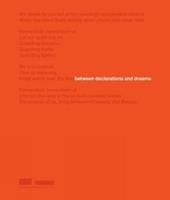
|
Low, S. W. (Ed). (2015). Between declarations and dreams: Art of Southeast Asia since the 19th century. Singapore: National Gallery Singapore. (Call no.: RSING 709.59074 BET) This catalogue was published to accompany the inaugural exhibition *Between Declarations and Dreams* at the National Gallery Singapore in 2015, featuring time periods and thematic sections of the exhibition with over 300 artwork images. Curatorial essays also provide insights into Southeast Asia’s diverse art history. |
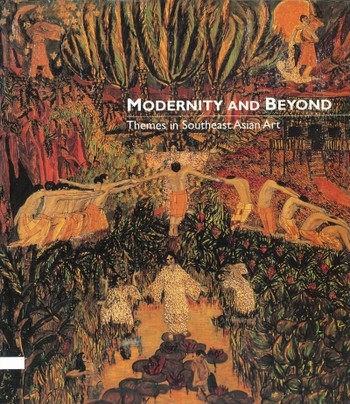
|
Sabapathy, T. K. (Ed). (1996). Modernity and beyond: themes in Southeast Asian art.. Singapore: Singapore Art Museum. (Call no.: RSING 709.59 MOD)
Published in 1996 alongside Singapore Art Museum’s opening, this catalogue was produced in conjunction with “Themes in Southeast Asia”, a component of the museum’s inaugural exhibition *Modernity and Beyond*. |
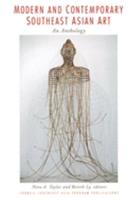
|
Taylor, N. A., & Ly, B. (Eds.). (2012). Modern and Contemporary Southeast Asian Art. Ithaca, N.Y.: Southeast Asia Program Publications, Southeast Asia Program, Cornell University. (Call no.: RSEA 709.59 MOD)
Various scholars, critics, and curators offer their perspectives on contemporary Southeast Asian art in this anthology of 13 essays. Essays provide insights on a range of modern artworks from the region, such as Cambodian sculptures influenced by post-conflict trauma and Thai installations that encourage audience participation. |
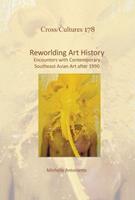
|
Antoinette, M. (2014). Reworlding art history: Encounters with contemporary Southeast Asian art after 1990. Amsterdam: Rodopi. (Call no.: RSEA 709.05 ANT)
This publication discusses key artists, exhibitions, collections, scholarship, ideologies, and discourse that are shaping contemporary Southeast Asian art, featuring major works by artists associated with Indonesia, Malaysia, the Philippines, and Singapore. |
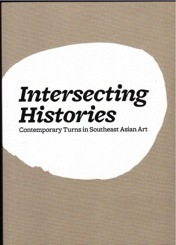
|
Sabapathy, T. K., Epp, R. B., & Sabapathy, D. (Eds.). (2012). Intersecting histories: contemporary turns in Southeast Asian art.. Singapore: School of Art, Design and Media, Nanyang Technological University. (Call no.: RSING 709.59 INT)
Nanyang Technological University (NTU) reopened its art gallery in 2012 with a grand opening exhibition of Southeast Asian contemporary artworks curated by art critic and historian T.K. Sabapathy. This fully illustrated catalogue was published in conjunction with the exhibition, featuring new primary research on Southeast Asian art by Sabapathy, and essays penned by other specialists in art history. |
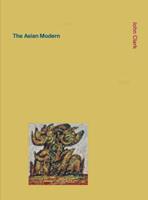
|
Clark, J. (2021). The Asian modern. Singapore: National Gallery Singapore. (Call no.: RSING 709.5 CLA)
Art historian John Clark charts his analysis of Asian art from the 1850s to the present day with this volume, showcasing the history of Asian art through the social life of various artists. Through different time periods, Clark highlights various art movements, artists, and historical events that are key to Asian art history. |
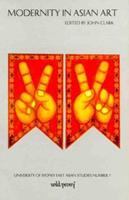
|
Clark, J. (1993). Modernity in Asian art. Broadway, N.S.W.: Wild Peony. (Call no.: RSEA 709.5 MOD)
Clark offers a close look at the contemporary art practices of Japan, China, India, Thailand, and Indonesia through a series of micro-histories. This scholarly publication presents critical analysis of modern Asian art’s influence and early development, covering topics such as colonialism, modes of exhibition, the influence of nationalism, and the avant-garde movement. |
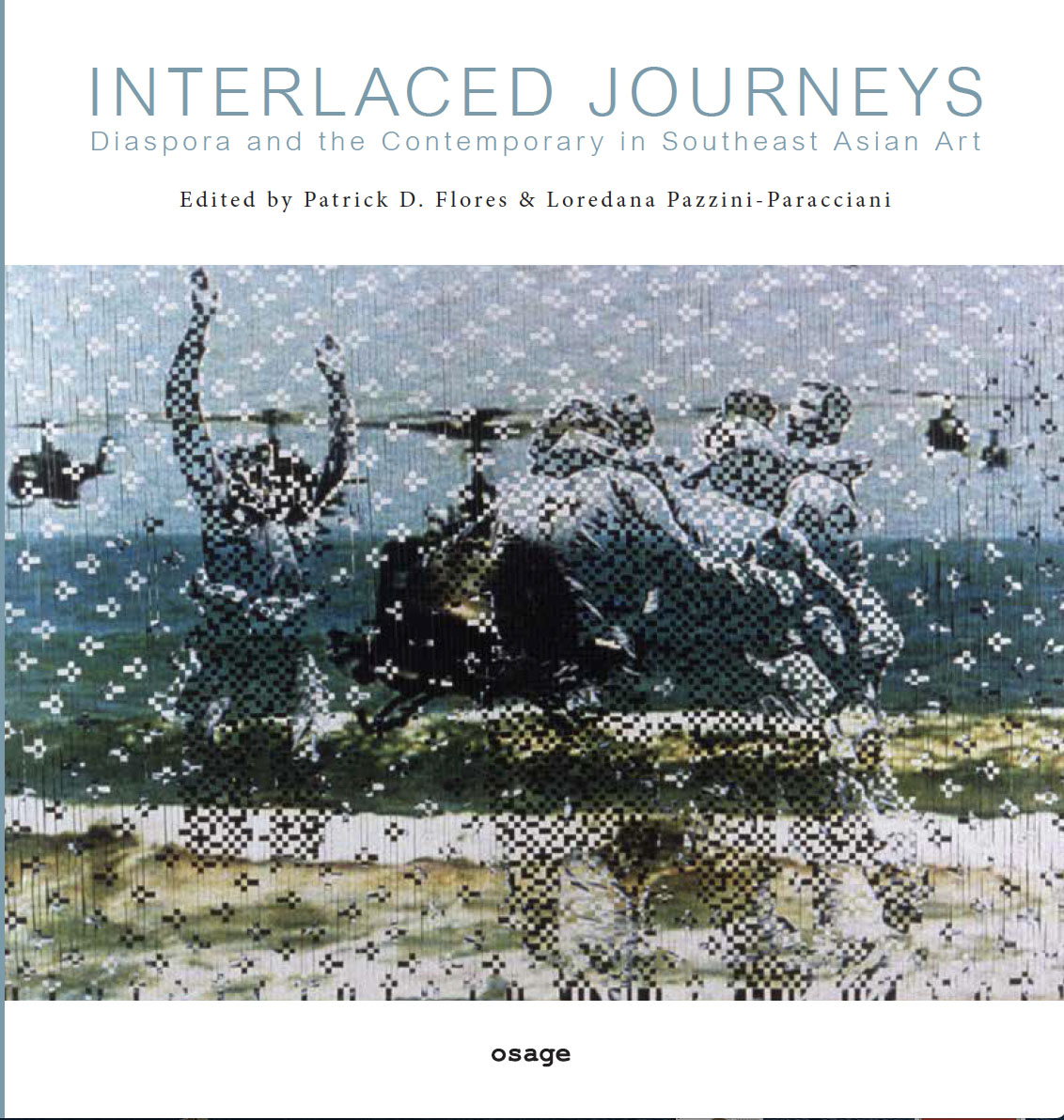
|
Flores, P. D., & Pazzini-Paracciani, L. (Eds.). (2020). Interlaced journeys: Diaspora and the contemporary in Southeast Asian art. Hong Kong: Osage Publications. (Call no.: RSEA 709.59 INT)
This anthology brings together essays by art historians and curators, where they explore the notion of diaspora in contemporary Southeast Asian visual culture, addressing the phenomena of movement and resettlement from the perspective of artistic and curatorial practice. |
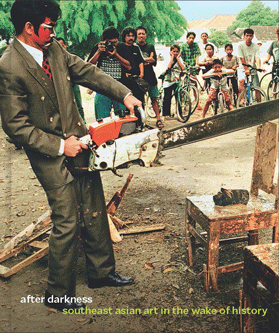
|
Tan, B. H., & Yun, M. (2017). After darkness: Southeast Asian art in the wake of history. New York, NY: Asia Society Museum. (Call no.: RSEA 709.59 AFT)
This is a catalogue published in accompaniment of Asia Society Museum’s 2018 exhibition of the same name. Essays explore the works of contemporary artists from Indonesia, Myanmar, and Vietnam through the lens of social and political change and discuss the artistic repercussions of political ruptures. |
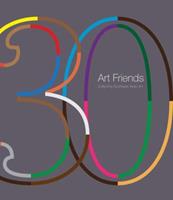
|
Quek, T. K. (2014). 30 art friends: Collecting Southeast Asian art. Singapore: Gatehouse Publishing. (Call no.: RSING 709.59 QUE)
This publication features a collection of 90 essays written by 30 Southeast Asian art collectors from the Philippines, Malaysia, and Singapore, showcasing photographs, illustrations, references, and research information from various collectors’ points of view. |
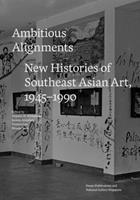
|
Whiteman, S. H. (Ed.). (2018). Ambitious alignments: New histories of Southeast Asian art, 1945-1990. NSW, Australia: Power Publications: National Gallery Singapore. (Call no.: RSEA 709.590904 AMB)
10 emerging scholars draw on unexplored archives and artworks from Southeast Asian artists in the post-war period, shedding new light on the significance of architecture, painting, installation, photography, and sculpture within the context of postcolonialism and the Cold War. |
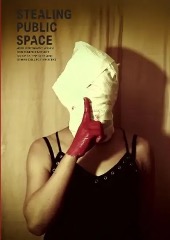
|
Lenzi, I. (2020). Stealing public space: How Southeast Asian contemporary art co-opts the city and other collective sites. Singapore: The Substation Ltd. (Call no.: RSING 709.59 STE)
This catalogue was published by independent contemporary arts centre The Substation in conjunction with a 2020 exhibition of the same name. It explores the connection between Southeast Asian art, languages, the city, and intangible or symbolic public spaces, featuring works from 25 established and emerging artists from across the region. |
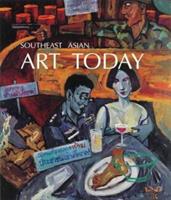
|
Fenema, J. V. (Ed). (1996). Southeast Asian art today. Singapore: G and B Arts International. (Call no.: RSING 709.59 SOU)
Leading art critics focus on selected contemporary artists who are transforming the notion of art in the region, creating new means of expression influenced by their exposure to Western art while balancing heritage and moral values. Features contemporary Southeast Asian artists from Indonesia, Thailand, Vietnam, the Philippines, and Singapore. |
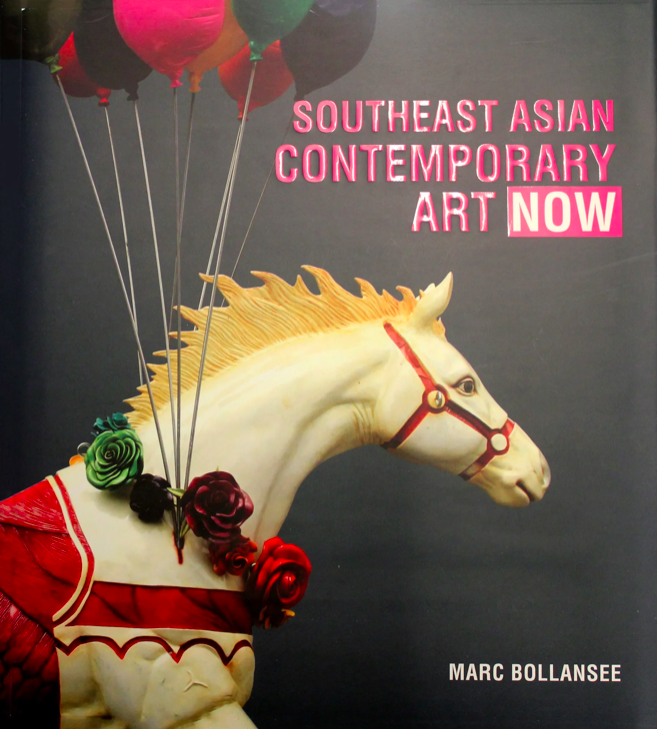
|
Bollansee, M. (2013). Southeast Asian contemporary art now. Singapore: Straits Times Press. (Call no.: RSING 709.590905 BOL)
Five years of travel, research, and interviews throughout Southeast Asia have allowed Bollansee to provide an overview on contemporary art practices in the region. The publication features an essay that covers the art scenes in six countries and interviews with artists, art critics, gallery owners, and leading collectors. |
Articles
Martin, M. (2011, March 11). Regional Pride. TODAY.
- The author looks at the Singapore Art Museum’s 2011 exhibition, Negotiating Home, History And Nation, which showcased two decades of contemporary Southeast Asian art from 1991 to 2011. Guest curator, Iola Lenzi, offers an argument for Southeast Asian art as a singular body.
Yusof, H. (2015, October 30). The region’s story, told through art. The Business Times.
- This article provides a glimpse of prominent Southeast Asian artworks that were to be displayed at the then soon-to-be opened National Gallery Singapore. It also offers a brief overview of Southeast Asian art history.
Bloomberg. (2010, April 5). Bringing obscure S-EA artists into the limelight. The Business Times.
- This article provides a look at how contemporary Southeast Asian artworks are auctioned, featuring several up-and-coming Southeast Asian artists.
Martin, M. (2015, October 28). The Region’s Best. TODAY.
- This article introduces the National Gallery’s UOB Southeast Art Gallery showcase, Between Declarations and Dreams, which opened on 24 November, 2015.
Leong, W. K. (1999, October 11). South-east Asian art to go on show. The Straits Times.
- This article reports on an exhibition held by Christie’s at the Singapore Art Museum that featured the works of Indonesian artist Raden Saleh, and other works from Indonesia, Philippines, Singapore, Malaysia, Thailand, and Vietnam.
Yusof, H. (2014, November 6). South-east Asian art gains traction globally. The Business Times.
- This article highlights global interest in Southeast Asian artists and their artworks, and how Art Stage Singapore, Singapore’s biggest art fair, is representing them to the world.
Raslan, K. (2001, November 24). Montien Boonma: Alchemist of the Soul. The Business Times.
- This article provides an introduction on Thai artist Montien Boonma, highlighting his background and artworks.
Ui-Hoon, C. (2002, April 6). Clash of the icons. The Business Times.
- This article provides a brief introduction on Indonesian artist Dede Eri Supria and his artistic influences.
Academic writing
Taylor, N. A. (2011). Art without History? Southeast Asian Artists and Their Communities in the Face of Geography. Art Journal, 70(2), 6-23. Retrieved 2021, November 28 via NLB’s eResources website. (myLibrary ID is required to access this article.)
- Taylor, a professor of South and Southeast Asian art at the School of the Art Institute of Chicago, explores how Southeast Asian artists have begun to move beyond the opposition of East versus West and instead, are engaging in interregional conversations regarding art. This journal article considers the “Southeast Asian” identity in the context of contemporary art and geographic region.
Cohen, M. I. (2014). Introduction: Global Encounters in Southeast Asian Performing Arts. Asian Theatre Journal, 31(2), 353-368. Retrieved 2021, December 1 via NLB’s eResources website. (myLibrary ID is required to access this article.)
- As Southeast Asian art becomes increasingly recognised, Cohen posits that Southeast Asian theatre and performance are no longer regarded as Western art’s exotic “Other”, or as a tool for nation building. Instead, this journal article discusses contemporary Southeast Asian art’s role in drawing people into conversations surrounding local and global issues.
Kee, J. (2011). Introduction Contemporary Southeast Asian Art. Third Text, 25(4), 371-381. Retrieved 2021, December 1 via NLB’s eResources website. (myLibrary ID is required to access this article.)
- Kee challenges current conceptions of modernity and contemporary art through the lens of Southeast Asia, exploring the complexities and nuances in studying this subject. The author dives into how art from this region can be understood and interpreted from various angles, such as geography, religion, language, and events.
Clarke, D. (2002). Contemporary Asian Art and its Western Reception. Third Text, 16(3), 237-242. Retrieved 2021, December 1 via NLB’s eResources website. (myLibrary ID is required to access this article.)
- Clarke explores the relationship between stakeholders in the Western art and Asian art communities, diving into how this relationship has changed and evolved, and how that has influenced the way Asian art is perceived and created. The author offers several perspectives to consider when examining and understanding Asian art, including the lack of Asian art scholars, an examination of Asian art textbooks, and the significance of local context.
Chua, K. (2011). On Teaching Modern and Contemporary Southeast Asian Art. Third Text, 25(4), 467-473. Retrieved 2021, December 1 via NLB’s eResources website. (myLibrary ID is required to access this article.)
- This journal article reflects on Chua’s experience teaching at Sotheby’s Institute, Singapore. The author explores key pedagogical and methodological issues, such as teaching modern and contemporary Southeast Asian art in tandem with Euro-American art, and the value of using aesthetic judgment in teaching this subject area. Chua attempts to offer solutions to these issues, advocating for a theory-plus-practice, historical-and-contemporary approach to teaching regional art.
Taylor, N. A. (2016). Have Performance, Will Travel: Contemporary Artistic Networks in Southeast Asia. Asian Journal of Social Science, 44(6), 725-739. Retrieved 2021, November 28 via NLB’s eResources website. (myLibrary ID is required to access this article.)
- Taylor takes a close look at artistic exchanges from the Southeast Asian region in the form of performance art events, re-enactments, and large travelling exhibitions, positing that close physical contact and creative collaboration have allowed for the writing of alternative art histories that rely on oral transmission and live recordings.
Antoinette, M. (March 2017). Endurance and Overcoming in the Art of Amron Omar and Melati Suryodarmo: Invoking Uncommon Alignments for Contemporary Southeast Asian Art History. Southeast of Now: Directions in Contemporary and Modern Art in Asia, 1(1), 81-129. Call no.: RSING 709.590904005 SN
- This article considers the art practice of two Southeast Asian artists – Amron Omar, one of Malaysia’s most well-known figurative artists, and Melati Suryodarmo, an Indonesian-born performance artist who has gained international prominence. Both artists explore the body and the self in their work, and this article offers an alternative art historical approach in the comparisons of Southeast Asian art.
Videos
National Library Board. (2020, March 6) Is Southeast Asian Art International? (Singapore Biennale 2019) Reading Art [video]. YouTube.
- Andrea Fam, Assistant Curator at Singapore Art Museum (SAM), explores Southeast Asian art in the Singapore Biennale 2019 at the Gillman Barracks gallery, discussing how such art has gone beyond tribal crafts and localised artistic expressions to greater international relevance.
Teoh, P. (2008) Spirit of the time. Southeast Asian contemporary art [video]. Channel NewsAsia. Call no.: RSING 709.590905 SPI. Three episodes can also be accessed online at https://contentdistribution.mediacorp.sg/products/spirit_of_the_time-_southeast_asian_contemporary_art.
- This eight-part series highlights the works of artists in Malaysia, Thailand, Vietnam, Bali, Jogjakarta, Jakarta, Bandung, Philippines, and Singapore.
Asia Society. (2020, November 19) Not Home Alone: Contemporary Art as Resistance in the Asia Society Triennial [video]. YouTube.
- Singaporean curator Boon Hui Tan offers a close reading of contemporary artworks from Asia featured in the inaugural Art Society Triennial, presenting his artistic concept and guiding themes.
National Gallery Singapore. (2021, February 27) The Asian Modern John Clark in Conversation with T.K. Sabapathy [video]. YouTube.
- Art historians John Clark and T.K. Sabapathy discuss Asian art history and historiography in conjunction with book launch of Clark’s The Asian Modern.
Sotheby’s. (2020, June 23) Tour the Tropics with Fascinating Southeast Asian Art [video]. Youtube.
- Discover artworks by Southeast Asian artists such as Romualdo Locatelli and Anita Magsaysay-Ho through the expertise of art specialist Rishika Assomull.
Guggenheim Museum. (2016, December 16) Symposium: Nora Taylor navigates Southeast Asian art history [video]. YouTube.
- Academic art historian Nora Taylor explores different perspectives regarding Southeast Asian art history.
Web Resources
Tee, I. (2021, August 4). Modern Southeast Asian Artists of Note. Art & Market (A&M). https://www.artandmarket.net/analysis/2021/8/4/modern-southeast-asian-artists-of-note
- Published on Art & Market (A&M), a multimedia platform that specialises in Southeast Asian art, this article provides an analysis on an array of contemporary Southeast Asian artists.
National Gallery Singapore. (n.d.). Between Declarations and Dreams: Art of Southeast Asia since the 19th Century (UOB Southeast Asia Gallery). Retrieved January 12, 2022, from https://www.nationalgallery.sg/southeastasia-between-declarations-dreams-art
- Dive into the National Gallery’s collection of Southeast Asian art through this online resource, which includes photographs of artworks, curatorial notes, and more.
Gwee, S. (2021, October 13). “As We Were”: Reflections on Loss in Contemporary Southeast Asian Art. Plural Art Mag. https://pluralartmag.com/2021/10/13/as-we-were-reflections-on-loss-in-contemporary-southeast-asian-art/
- This article offers a review on the exhibition As We Were, held in Singapore in 2021 and curated by SEED the art space, featuring 46 artworks from eight Southeast Asian countries.
Tay, L. (2021, June 29). Ceramics and Architecture in Southeast Asia. Esplanade Offstage. https://www.esplanade.com/offstage/arts/ceramics-and-architecture-in-sea
- Tay highlights the ceramic works of three Southeast Asian artists and explores their influences and inspirations.
All Rights Reserved. National Library Board Singapore 2022.
References
-
Taylor, N. (2012). “Introduction: Who Speaks for Southeast Asian Art?” In Modern and Contemporary Southeast Asian Art. Ithaca, N.Y.: Southeast Asia Program Publications, p. 2. ↩
-
Taylor. p. 3 ↩
-
Yasuko, F. & Aki, H. (Eds). (2016). Art Studies 2 THE 1990s: The Making of Art with Contemporaries. Japan: The Japan Foundation Asia Center, p. 62. ↩
-
Clark, J. (2012). “The Southeast Asian Modern: Three Artists.” In Modern and Contemporary Southeast Asian Art. Ithaca, N.Y.: Southeast Asia Program Publications, p. 17. ↩
-
Clark. p. 19 ↩
-
Huynh-Beattie, B. “Vietnamese Modern Art.” In Modern and Contemporary Southeast Asian Art. Ithaca, N.Y.: Southeast Asia Program Publications, p. 34. ↩
-
Clark, J. (2021). The Asian Modern. Singapore: National Gallery Singapore, p. 88. ↩
-
Fenema, J. V. (Ed). (1996). Southeast Asian art today. Singapore: G and B Arts International, p. 3. ↩
-
Fenema. p. 39 ↩
-
Fenema. p. 49 ↩
-
Cate, S. (2012). “Thai Artists, Resisting the Age of Spectacle.” In Modern and Contemporary Southeast Asian Art. Ithaca, N.Y.: Southeast Asia Program Publications, p. 72. ↩
-
Cate. p. 75 ↩

